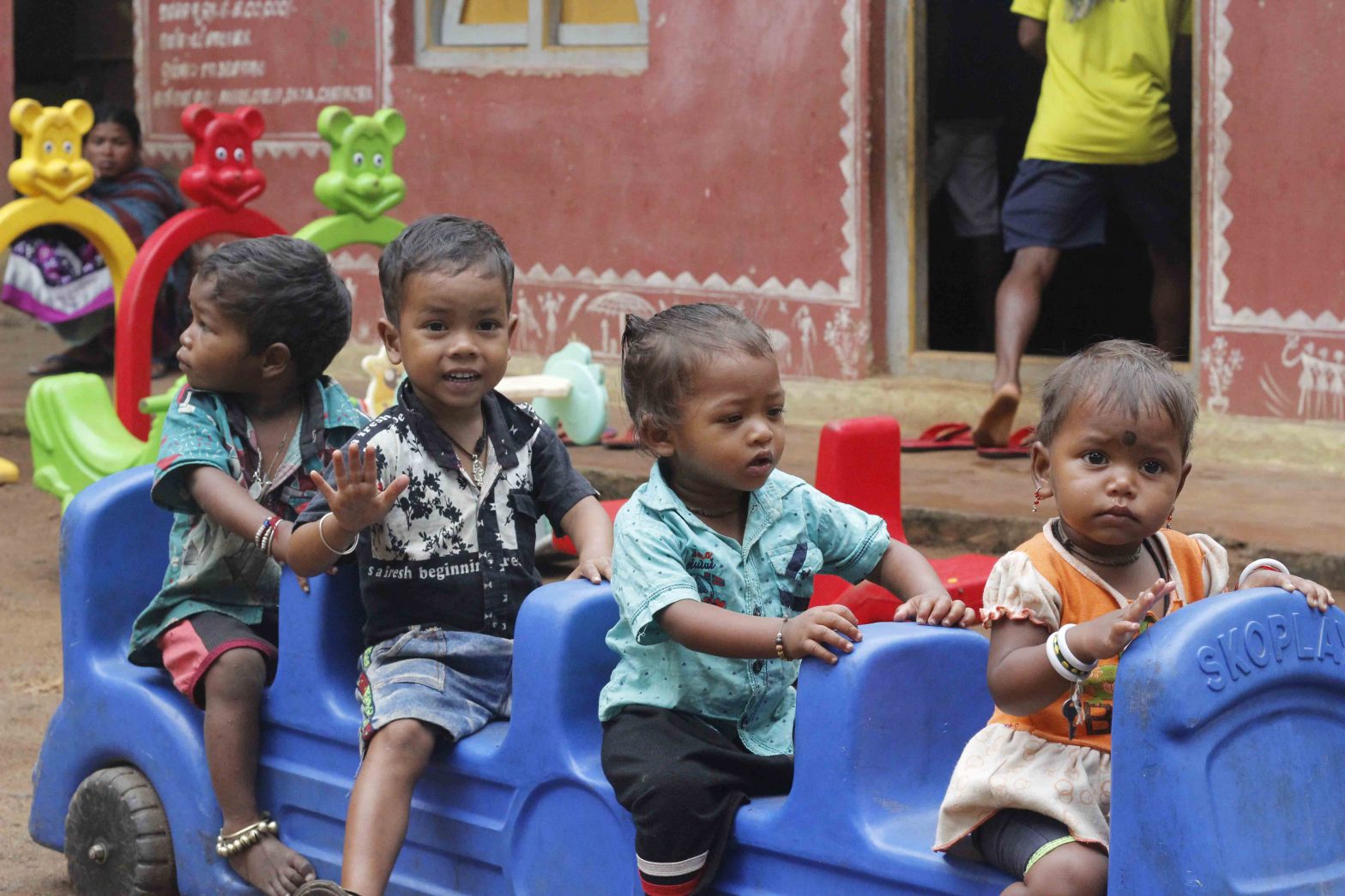
How these creches in Odisha help tribal mothers work in peace
To improve the health of tribal children and to help women collect forest produce without worrying about their young children, the Odisha government starts creches for toddlers.

To improve the health of tribal children and to help women collect forest produce without worrying about their young children, the Odisha government starts creches for toddlers.
Every day at 7:30 am Majewari Wadaka, a 40-year-old tribal woman, drops her youngest daughter at a creche before venturing into the forest along with her husband to forage for fruits of the forest. Her three-year-old daughter, Guddi, who refused to leave her side earlier has now made friends with other tribal children at this recently started village daycare centre.
What has caught Guddi’s attention are the vividly painted walls, a television set, a swing and a slide, a mattress, blankets and her favourite ragi dosa. But the most exciting part of going to the creche is the other tribal children to play with.
As a member of the Dongria Kondh tribe, Wadaka belongs to the particularly vulnerable tribal group (PVTG), as classified by the state government.
Tribes form 24% of the total population of Odisha and PVTGs are the most vulnerable and marginalised among them. Odisha has the highest number of PVTGs in India – 13.
Most of the time she would run a high fever due to mosquito bites or weather conditions. Even (when) we’d created a space to shelter her, we’d still be constantly worried about her”
Urita Majhi
As a pilot project, 61 creches have been started in 17 places while 45 more are in the pipeline.
Creches – a boon for tribal mothers
A native of Khambesi village of Niyamgiri Hills in Rayagada district, Wadaka, a tribal mother of four, is away from her home for most part of the day. She is either collecting minor forest produce or doing farm labour work.
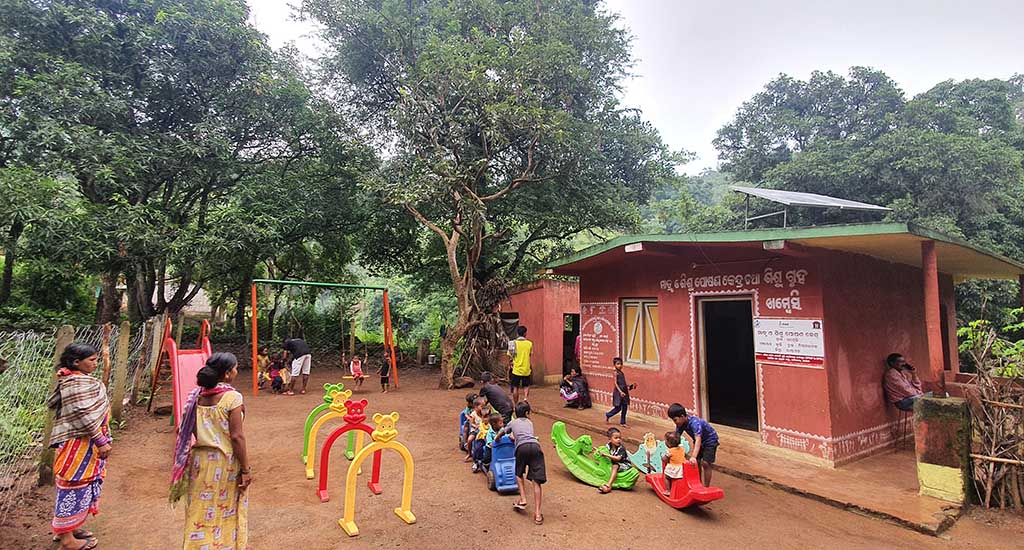
“I used to take my children – now aged 12, 10 and five – along with me to the forest because there’s no one to take care of them at home. There was a constant fear of snake bite or insect bite,” Wadaka told Village Square.
As a walk to the forest and back takes roughly three hours she usually returns home by 4 pm. So the creche has come as a boon for her. When she leaves her daughter Guddi there, she knows she can just do her work without constantly worrying.
Similar sentiments resonate nearly 100 km away – in Devgada village of Belghar block in Kandhamal district. The creche in Devgada has 17 tribal children, including Urbita Majhi’s daughter.
“I would generally take my two-year-old daughter with me to the forest. Most of the time she would run a high fever due to mosquito bites or weather conditions. Even (when) we’d created a space to shelter her, we’d still be constantly worried about her,” said Majhi, 23.
When it just was not safe to take the children and they could not be left at home unattended, one parent would have to stay at home with the children.
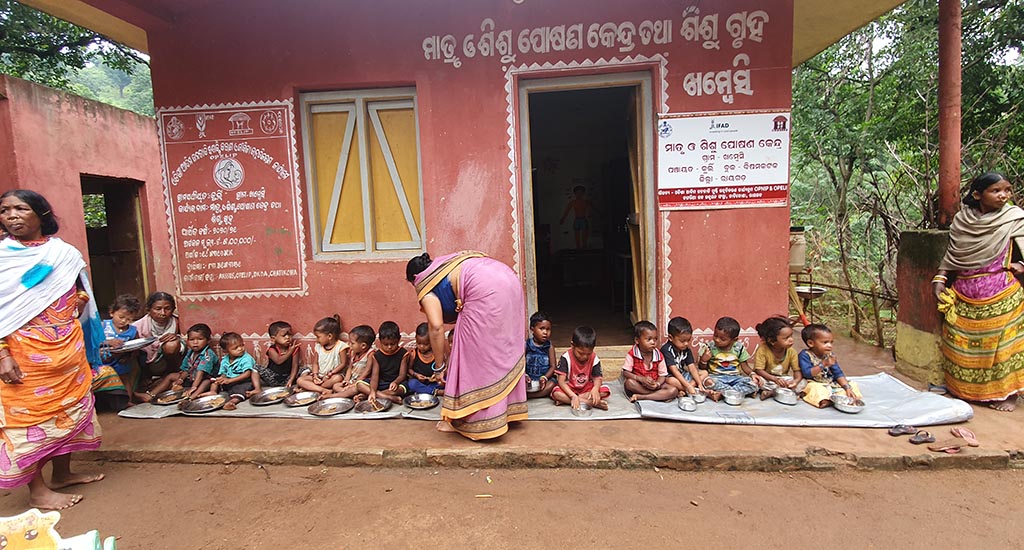
On those occasions, “Naturally we couldn’t collect enough,” said Majhi. “But when she’s at the creche we don’t worry except dropping her in the morning and picking her up after the day ends. She does not fall sick that often now,” Majhi added.
Better nutrition for the tribal children
When the parents drop the children at the creche in the morning – there are some inevitable cries, but mostly happy faces. The children are first fed ragi to kickstart the day. Breakfast is followed by games, watching poems on TV, lunch and nap time.
The children are provided three meals – one full course meal and snacks twice – consisting of dates, sattu, ragi, khichdi, rice and dal, leafy and green vegetables.
The meals are freshly prepared and served hot. The meals provide them the much-needed dietary diversity required for growth. Five days a week, the meal includes eggs.
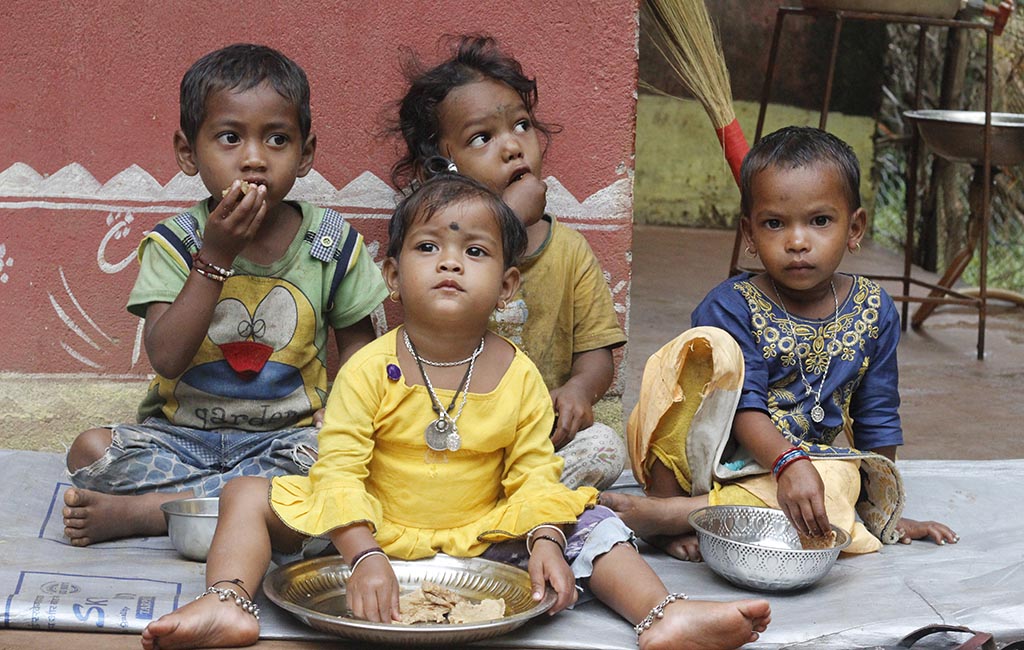
“The meals are specifically curated for the children to ensure proper nutrition. On-the-spot feeding ensures that the children consume the right amount of food and their diet is maintained,” Jashoda Badanayale, nutritional manager in Belghar, told Village Square.
“In many of these centres nutritional gardens have been set up to cultivate vegetables,” said Badanayale.
Special attention for malnourished children
According to a 2015 study by the Odisha Scheduled Castes and Scheduled Tribes Research and Training Institute (SCSTRTI), 32% were under the category of severe stunting, 35% severe underweight and 18% severe wasting among under-five age children.
“In many of these centres nutritional gardens have been set up to cultivate vegetables”
Jashoda Badanayale
While there is a complete absence of data on development outcomes and health status of PVTGs in the state, the recent National Family Health Survey (NFHS – 5) shows that the death of children under 5 years of age among Schedule Tribes has increased from 65.6 per 1,000 live births in 2015-16 (NFHS-4) to 66.2 per 1,000 live births in 2021 (NFHS-5).
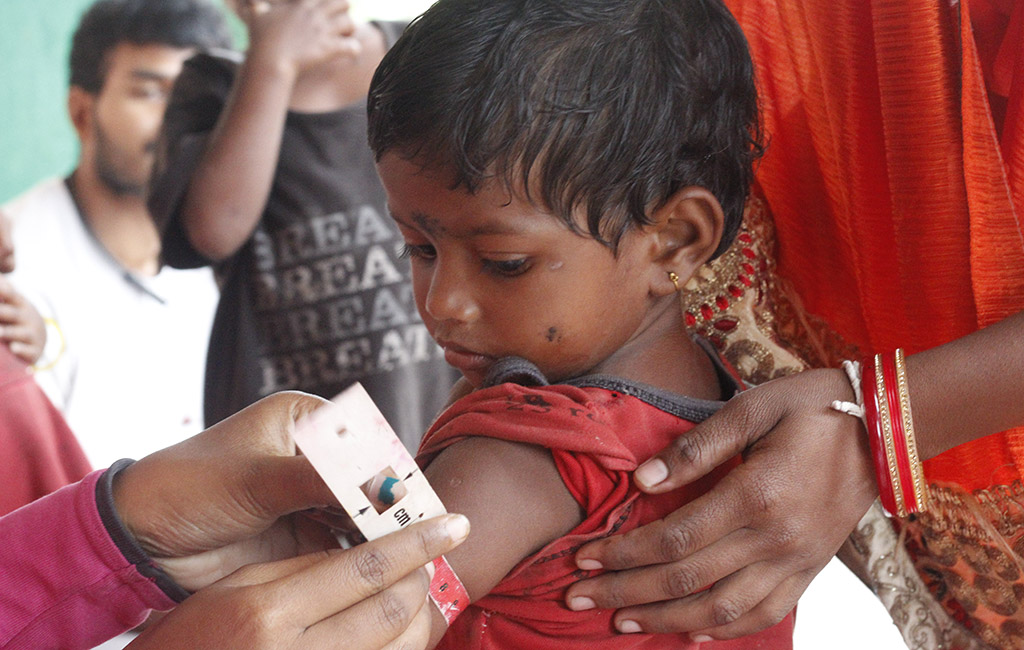
To change the situation, children from the selected villages are scanned for malnutrition and those suffering from severe acute malnutrition are treated.
A monthly log and growth chart is maintained to evaluate and assess the nutritional status of the children. Measuring the children’s mid-upper arm circumference and weight every month and measuring the height every four months help monitor the progress.
“The creche has ensured better health for my child and better productivity for me,” said Majhi.
Community-based approach
To make the creche child-friendly, a community-based approach has been adopted.
The caretakers are nominated by the women of the village and most are members of self-help groups.

“Every month they organise a community meeting to discuss issues, if any. The community also participates by offering fruits and vegetables from their house at their convenience,” said Badanayale.
Villages with 10 to 15 children aged between six months and three years have been selected under the programme for establishing a crèche.
The creches – an initiative of the Odisha PVTG Empowerment and Livelihood Improvement Programme (OPELIP) – tries to address the gap in anganwadis (village day care centres).
“There have been constant concerns around the stagnant or declining population of the PVTGs and the lack of nutrition. The creche is an initiative in that direction to address the gaps,” P Arthanari, programme director, OPELIP, told Village Square.
“We have observed remarkable changes and are planning to replicate the facility in more places. To ensure that there is no duplication with other existing initiatives, we’re doing this in coordination with the Integrated Child Development Scheme (ICDS) and the Women and Child Development Department,” he added.
The lead image shows a creche in Odisha, run for tribal children, which improves their health and helps their mothers work without worrying about the children (Photo by Aishwarya Mohanty)
Aishwarya Mohanty is an independent journalist based in Odisha. She reports on the intersection of gender, social justice, rural issues and the environment. She is also a Village Square Media Fellow.